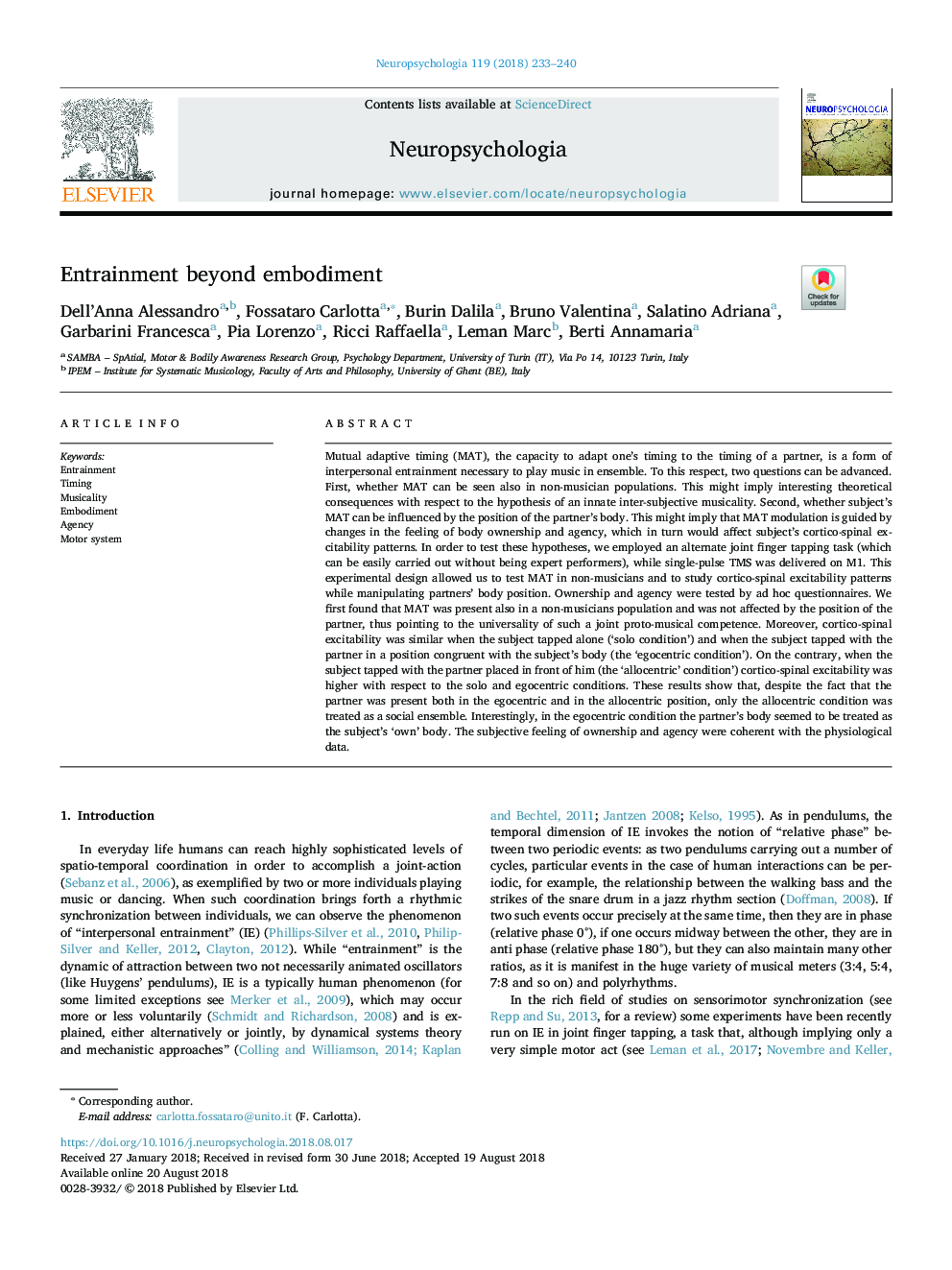| کد مقاله | کد نشریه | سال انتشار | مقاله انگلیسی | نسخه تمام متن |
|---|---|---|---|---|
| 11004674 | 1475537 | 2018 | 8 صفحه PDF | دانلود رایگان |
عنوان انگلیسی مقاله ISI
Entrainment beyond embodiment
ترجمه فارسی عنوان
جذب بیش از حد تجسم
دانلود مقاله + سفارش ترجمه
دانلود مقاله ISI انگلیسی
رایگان برای ایرانیان
کلمات کلیدی
جذب، زمان سنجی، موزیکال تجسم، آژانس، سیستم موتور،
موضوعات مرتبط
علوم زیستی و بیوفناوری
علم عصب شناسی
علوم اعصاب رفتاری
چکیده انگلیسی
Mutual adaptive timing (MAT), the capacity to adapt one's timing to the timing of a partner, is a form of interpersonal entrainment necessary to play music in ensemble. To this respect, two questions can be advanced. First, whether MAT can be seen also in non-musician populations. This might imply interesting theoretical consequences with respect to the hypothesis of an innate inter-subjective musicality. Second, whether subject's MAT can be influenced by the position of the partner's body. This might imply that MAT modulation is guided by changes in the feeling of body ownership and agency, which in turn would affect subject's cortico-spinal excitability patterns. In order to test these hypotheses, we employed an alternate joint finger tapping task (which can be easily carried out without being expert performers), while single-pulse TMS was delivered on M1. This experimental design allowed us to test MAT in non-musicians and to study cortico-spinal excitability patterns while manipulating partners' body position. Ownership and agency were tested by ad hoc questionnaires. We first found that MAT was present also in a non-musicians population and was not affected by the position of the partner, thus pointing to the universality of such a joint proto-musical competence. Moreover, cortico-spinal excitability was similar when the subject tapped alone ('solo condition') and when the subject tapped with the partner in a position congruent with the subject's body (the 'egocentric condition'). On the contrary, when the subject tapped with the partner placed in front of him (the 'allocentric' condition') cortico-spinal excitability was higher with respect to the solo and egocentric conditions. These results show that, despite the fact that the partner was present both in the egocentric and in the allocentric position, only the allocentric condition was treated as a social ensemble. Interestingly, in the egocentric condition the partner's body seemed to be treated as the subject's 'own' body. The subjective feeling of ownership and agency were coherent with the physiological data.
ناشر
Database: Elsevier - ScienceDirect (ساینس دایرکت)
Journal: Neuropsychologia - Volume 119, October 2018, Pages 233-240
Journal: Neuropsychologia - Volume 119, October 2018, Pages 233-240
نویسندگان
Alessandro Dell'Anna, Carlotta Fossataro, Dalila Burin, Valentina Bruno, Adriana Salatino, Francesca Garbarini, Lorenzo Pia, Raffaella Ricci, Marc Leman, Annamaria Berti,
